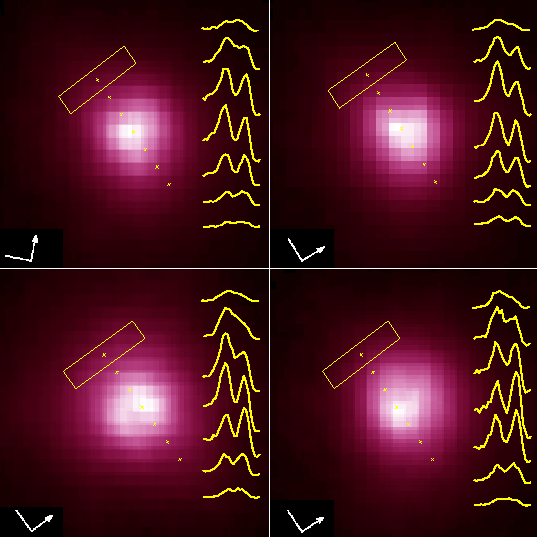
 |
Harvard-Smithsonian Center for Astrophysics Press Release |
|
FOR RELEASE: 9:20 a.m. EST, January 13, 2000 LIKE A HUMAN HEART: BETELGEUSE'S CHROMOSPHERE BEATS ASYMMETRICALLY
The photo-montage made in ultraviolet light shows the pulsating atmosphere of Betelgeuse. The star is scanned with the Space Telescope Imaging Spectrograph. Seven spectra are recorded through a small field of view shown by the rectangle at different positions on the disk, marked by the crosses. The thick yellow curves show the shape of a double-peaked emission line which emerges from Betelgeuse's chromosphere. The depression between the peaks is formed far out in this warmer envelope. The spectra in the top images of January and March '98 reveal that this outer region collapses since the left-hand peak of the emission line is everywhere stronger than the right. But the STIS scan in the lower left image of September '98 unveils how atmospheric gas begins to move up in the fifth scan position, where the right-hand peak exceeds the left. Here gas streams in opposite directions at the same time through the star's outer atmosphere. The spectral scan in the lower right image of March '99 shows that the expandingtrend proceeds and extends further across the chromosphere. The arrows in the images point North in the plane of the sky and should be aligned when comparing the location of surface details. Note that the mean intensity levels of the four images have been equalized to bring out these details. The top images are actually observed brighter than the lower ones. Note also that some spectral scans are taken a week apart from the images.
|
